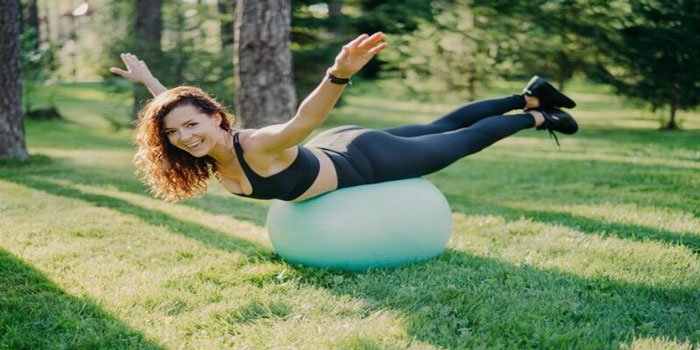Exercise helps us stay healthy and independent as we age. Not all workouts are suited for seniors. Balance, flexibility, and strength must be considered while planning an exercise program. Aerobic activity like walking, cycling, or swimming may enhance cardiovascular health, lower chronic disease risk, and boost happiness. Weight or band resistance training may help preserve muscle mass and bone density. Yoga and tai chi may minimize fall risk. Stretching and yoga help maintain mobility and range of motion. Core muscle workouts assist in stabilizing the spine and enhancing balance. It's essential to start with low-impact exercises and gradually build intensity and length. Before beginning any workout regimen, particularly if you have health issues, see a doctor.
Exercises For Seniors:
Aerobic Exercise:
Workouts focusing on aerobic movement are excellent for improving cardiovascular health, increasing endurance, and reducing calorie consumption. Exercises such as brisk walking, cycling, and swimming are all aerobic activities. Aim for at least 150 minutes of moderately intense aerobic exercise each week for elderly citizens or 75 minutes of vigorously low aerobic activity per week.
Strength Training Using Resistance:
Strength training, or resistance exercise, is essential for keeping muscle mass and bone density at healthy levels. Strength training is another name for resistance exercise. Activities like lifting weights, exercising with resistance bands, and practicing exercises that utilize little more than your body weight are great options. At least twice a week, older citizens should aim to participate in an activity that involves lifting weights.
Balance Exercises For Senior:
Workouts that emphasize the need to maintain balance, such as tai chi, yoga, and exercises performed on one leg, are essential for lowering the risk of falling and improving overall stability. These exercises help strengthen muscles in addition to aiding develop flexibility and range of motion, which are both benefits of doing them.
Stretching:

Stretching is an excellent exercise that enhances flexibility, critical for maintaining mobility and independence as we age. Stretching exercises may be of some assistance. Testing should be done regularly, at least a few times a week, focusing on the major muscle groups, such as those in the legs, back, and shoulders. Paying specific attention to these muscle groups is essential while stretching.
Cardio With Low Impact:
For people of a certain age, it's best to focus on cardiovascular activities that don't stress the joints, such as cycling, water aerobics, and swimming. Seniors might gain a lot from participating in events like this. Not only are these exercises gentle on the joints, but they also aid in improving cardiovascular health and are highly recommended by medical professionals.
Flexibility And Mobility Exercises:
Flexibility and mobility exercises, such as yoga, tai chi, and Pilates, can help to improve the range of motion and reduce the risk of injury.
Core Exercises:
Core exercises, such as planks, bridges, and bird dogs, are great for strengthening the abdomen, back, and hip muscles.
Mind-Body Exercises:

Mind-body exercises, such as yoga, tai chi, and meditation, can help to reduce stress, improve balance, and increase overall well-being.
Social Activities:
Engaging in social activities, such as dancing, hiking, or joining a sports league, can help to improve physical and mental well-being.
Overall, seniors should aim to engage in various physical activities, including aerobic exercise, resistance training, balance exercises, stretching, low-impact cardio, flexibility and mobility exercises, core exercises, mind-body exercises, and social activities. It is essential to consult with a healthcare professional before starting a new exercise program, as specific exercises may not be appropriate for certain health conditions or limitations.
Conclusion
Seniors must exercise in order to keep their bodies and minds healthy, lower their chance of developing chronic illnesses, and enhance their quality of life. Physical endurance and heart health benefit from participating in aerobic activities like walking, cycling, as well as swimming. Resistance band workouts and weight lifting are two examples of strength training activities that may aid in the maintenance of muscle and bone mass. Yoga and other stretching activities are great for increasing flexibility and decreasing the likelihood of injury from falls. In addition, doing balancing drills like tai chi and single-leg stands will strengthen your muscles and joints, making you less likely to fall. Before beginning a new fitness program, seniors should talk to their doctor to be sure it's right for them. Seniors should try to get at least 150 minutes of aerobic activity each week at a moderate level.




